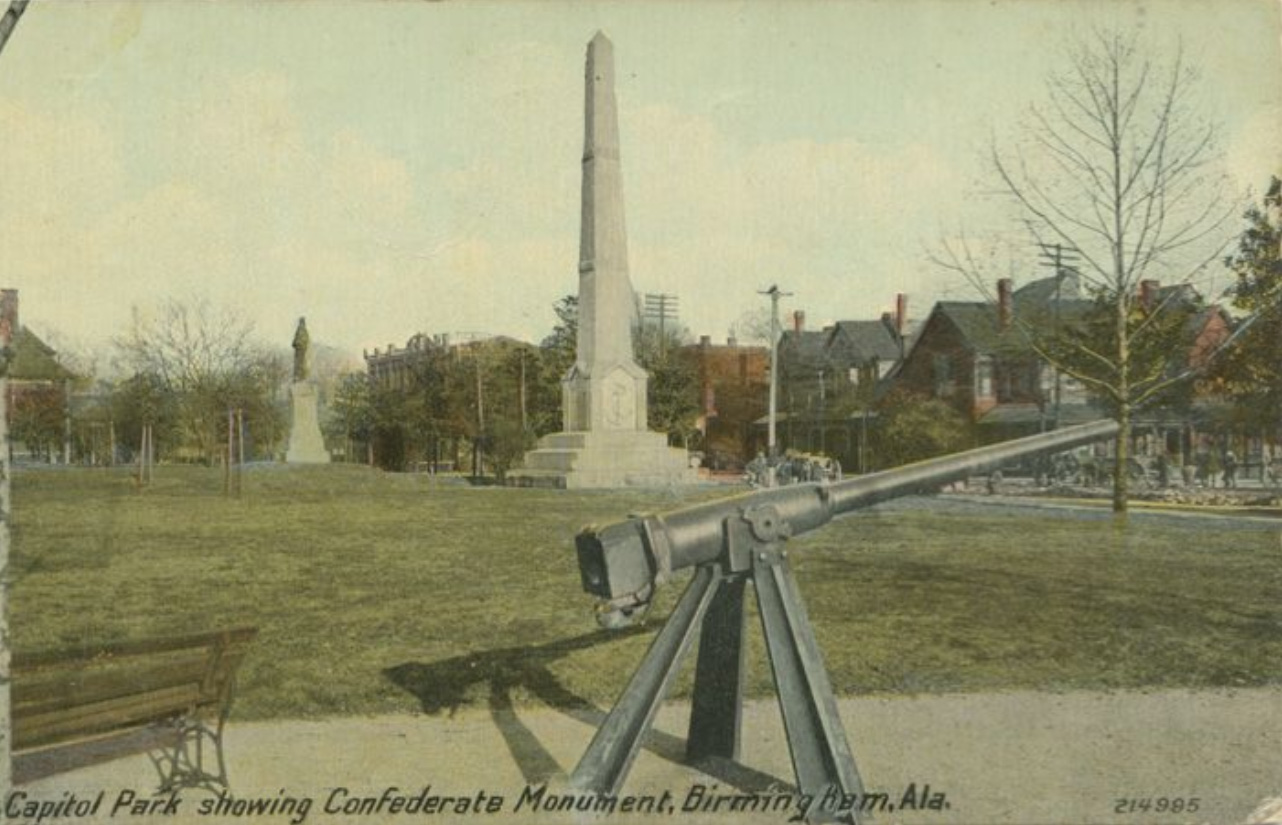By Matthew Poirier
Birmingham, Alabama was founded in 1871, and almost by magic, became an industrial boomtown by the 1890s. City leaders created a center of commercial prosperity as well as a usable past that linked the city to the Confederacy and their values of white supremacy and conformity. These values gave the city’s white laborers a taste of the wages of whiteness, where they reveled in a shared, constructed white past, and further separated themselves from the Black working class.

City leaders decided in 1894 to build a monument in Linn Park to “give the youth of the South the enviable example…” of how Confederate values of white supremacy were “still to be victor.” Even though their city didn’t exist during the war, city leaders knew that celebrating the Confederacy was essential to their control of southern society. Racial equality threatened to disrupt Birmingham’s social and labor order. A narrative celebrating white unity under the Confederacy helped ensure white unity in the city. As the leader of the Alabama United Confederate Veterans boasted at the unveiling ceremony in 1905, the recent “supreme achievement of Anglo-Saxon civilization” in Birmingham “was the cheerful spirit of that footsore man in gray.” White Birmingham citizens did justice to Confederate soldiers as they continued in the fight against “the hideous specter of a threatened race equality” in the city. The monument was conceived of around the same time when Alabama’s constitution legally stripped African Americans of the right to vote and set up state mandated Jim Crow segregation, all fights against the “threatened race equality.”
The monument gave white laborers a sense of belonging outside of their economic interests. Orators at the unveiling ceremony criticized those who were in a “blind rush for material power and prosperity” and asserted that they did not emulate Confederate soldiers’ “devotion to duty and patient sacrifice.” This was a warning to those who thought about striking for better conditions as striking was against their Confederate legacy and thus a crime against their race.



